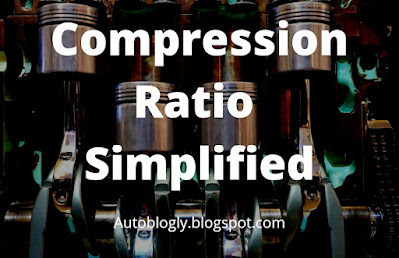Compression Ratio Of IC Engine in Simple Words
Compression Ratio Of IC Engine in Simple Words. This is the main topic of today's post. Here, you will learn about the compression ratio of different combustion engines. I will cover important points like, what is compression ratio in automobiles? Why do petrol and diesel have different compression ratios? All such types of questions are simplified in this article. So, let's dive in.What is Compression Ratio in Automobile?
It is the ratio between the volume of the cylinder when the piston is at BDC to the volume of the cylinder when the piston is at TDC. This is known as the compression ratio in automobiles. TDC and BDC are the top and bottom positions of cylinders where the piston moves up and down. The full form of TDC is Top Dead Center and BDC is Bottom Dead Center. Here, the cylinder is referred to as the combustion chamber of the petrol or diesel engine.
Have a look at the image - there you will easily understand that 10 grams of the air-fuel mixture are being compressed and made to 1. Hence, The ratio will be 10:1.
Need For Compression In IC Engine
There are four strokes performed inside the cylinder block. Suction, compression, power, exhaust. Out of these 4 strokes, the compression stroke is the most important form of all. However, we get power from the power stroke. But, to get that power, the engine needs to get ready and be prepared for the power stroke. As we know, compression stroke comes before the power stroke, so it becomes crucial to compress the air-fuel mixture carefully and accurately. It must be very accurate as per the calculations. If a little bit of mistake is found anywhere, then the engine will start knocking. It is very difficult to diagnose such problems. This is why compression stroke is the most important of all.
Compression Ratio Of Diesel And Petrol Engine
Petroleum and Diesel are two different kinds of fuels. The compression ratio of petrol is 8:1 to 12:1 while the compression ratio of diesel engines is 14:1 to 22:1. Generally, the compression ratio of diesel engines is always higher than that of petrol engines.
We all know petrol is gasoline fuel and highly inflammable and needs no or little spark to cause a fire. But diesel is not like that. It takes time to catch fire. In this case, we need some heat and that is obtained by compressing the air in the combustion chamber.
I hope you have noticed. There is no spark plug in the diesel engine. This is one of the reasons for not using spark plugs in diesel engines.
How to increase the compression ratio of an engine?
The compression ratio of engines can be increased by using heavier components inside the cylinder block.
Advantages and Disadvantages Of higher Compression Ratio
There are a few pros of cons of a higher compression ratio.
When the compression ratio is high, there will be more temperature and pressure inside the cylinder. It will result in the complete burning of fuel. And we will get better acceleration and mileage. On the other hand, it will make the engine heavier and engine operation can be noisy. Sometimes, you may find knocking also.
Also, read about CRDI in very simple words.



Comments
Post a Comment